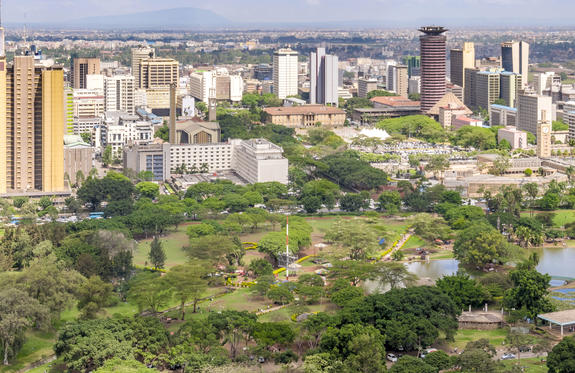
Situated along the Nairobi River in beautiful Kenya, the capital of Nairobi is East Africa's most cosmopolitan city. It serves as an excellent starting point for African safari trips around Kenya. Nairobi is Africa’s 4th largest city and is a vibrant and exciting place to be. There are some fascinating attractions: its cafe culture, unbridled nightlife, the National Museum, the Karen Blixen Museum and most notably, just 20 minutes from the city centre, wild lions and buffalo roam in the world’s only urban game reserve. Make sure you pay a visit to the elephant orphanage operated by the David Sheldrick Wildlife Trust for a once in a lifetime experience.

Formerly the northern part of Selous Game Reserve, Nyerere National Park is Tanzania's largest National Park. Stretching over an impressive 30,893 square kilometres, the park is home to some of the world’s largest concentrations of wildlife, and the incredible diversity and sheer volume of animals draw visitors from around the globe. Travellers can look forward to spotting a wide collection of common and rare species including the famous Big Five, some rare species of antelopes like Roan Antelope, and large concentrations of elephant and hippos. Don’t miss the opportunity to take a boating safari on the exquisite Rufiji River, spot the endangered African wild dog, and enjoy a guided walking safari with a highly knowledgeable guide.

Following its 2008 merger with Usangu Game Reserve and other notable wetlands, Ruaha is counted among Tanzania's biggest national parks, spanning more than 20,000km². It is also a sizeable elephant haven and home to buffalo, huge populations of lion, leopard, and a profusion of bird species, including kingfishers, plovers, egrets, hornbills and sunbirds. Crocodiles and hippos thrive in the Great Ruaha River, which flows along the sanctuary’s eastern border and in the dry season between July and November, animals flock to the last remaining water sources, presenting an exceptional wildlife spectacle. There are a number of accommodation options available but some close for the wet season in March and April.




